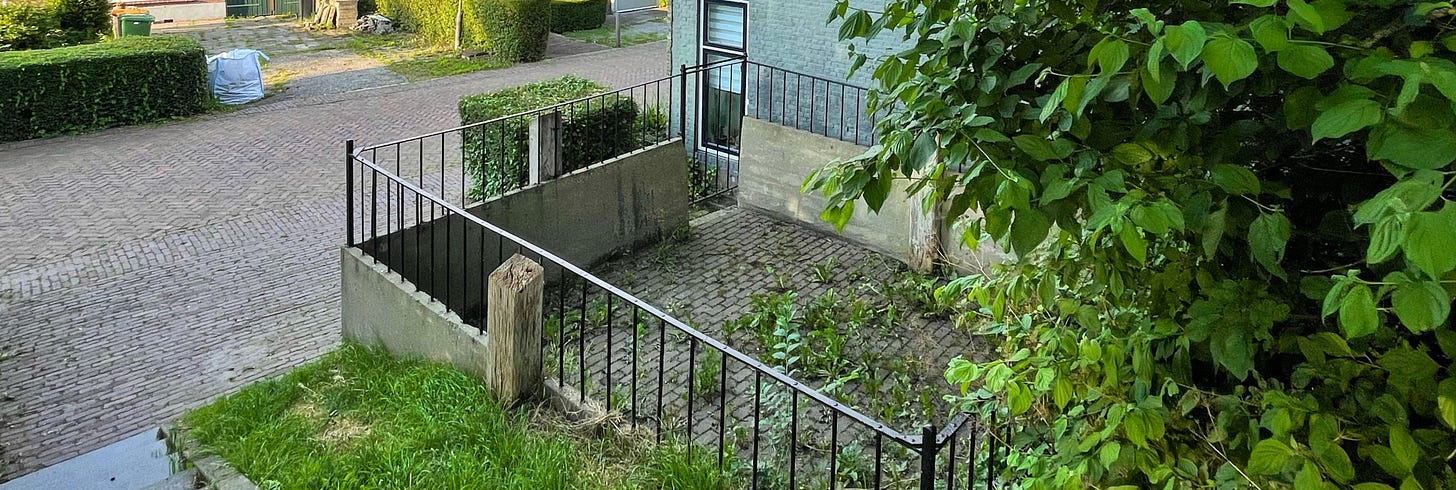History is all around you.
Island Stories #18: Walking the streets of historic Zierikzee, I stumbled upon some forgotten history.
Wherever you walk on Schouwen-Duiveland, the connection to history and those who lived before us on the island is often visible. You can see it in the landscape, formed by centuries of battling against the aggressive sea that constantly tried to wash away the dikes and the agricultural land behind it. And you can see the traces of history in the island's cities, villages, and farms.
Today, I walked on the former city wall of Zierikzee and passed the town's 'protective cage,' known in Dutch as a 'schutskooi.' The city used it to accommodate stray cattle. The 'schutter,' the cage manager, lived in the house next to the cage, one of the very few remaining city farms within the part of Zierikzee protected by city walls.
The 'schutter' looked after his animal guests until the rightful owner showed up. The owner would then first have to pay the wage before he could get his property back. In 1648 this was an amount of 6 'stuivers' per animal. When I grew up, we still had stuivers, pieces of five cents. Three hundred years later, in 1950, the charge was 25 cents per leg.
This protective cage is the only one that remains on the island; it was in use until the flood disaster of 1953. The current appearance dates from the early 20th century. It used to be a cage of only iron bars, but after someone had liberated one of his animals by bending the bars, the cage manager added the lower concrete walls.
This photo shows the view from the same former city wall over Zierikzee. In the distance, you can see the Saint-Livinus Monster Tower, or 'Fat Tower,' that dominates the view of the city and that I described here.
This summer, I write from the Dutch island of Schouwen-Duiveland. I will mostly cover lighter and more local themes, like the history of the island and its beautiful nature. A neck hernia makes writing difficult, so the posts are often shorter. Sometimes when I feel too much pain, I will only share a picture.
After the summer, it will be high time to get back to the serious themes that I often covered in springtime: climate change, biodiversity loss, or pollution, but I won’t stop sharing about the beauty of nature; when we are reminded of what’s at stake, we realize better why we need to keep fighting to preserve the planet. If you enjoy this newsletter, I hope you will support this initiative by subscribing.
Notes:
https://www.ensie.nl/monumenten-in-zeeland/boerderijen-in-zierikzee
https://krantenbankzeeland.nl/issue/zni/1983-11-11/edition/0/page/5?query=









Fun Alexander. An fine nugget of history and Zierikzee farm life.
The 'Schutters' house looks comfy for living, the annoying part of the job might have been that the cow is sounding-off whole night, calling for her other herd members.
So what do you do if you lost a Koe(cow), today? If found, the Cow probably goes to the Sheriffs Department and one will still need some bail money (-:
Great photos and additional links
Thank you for this fascinating post. There's so much to discover in Zierikzee. How interesting that they had protective cages like that and that this one is still there. I love city walls and I've recently been on the ones in Lucerne and Murten. And now I want to go explore what's left of the city wall in Zierikzee.
Really enjoying the local history, nature etc. posts and your pictures. Thank you! This was a great story to read over lunch.
Hope your health keeps improving.